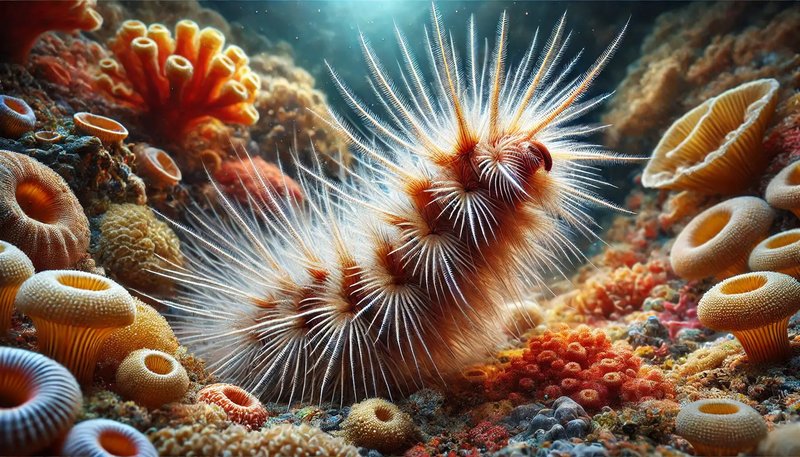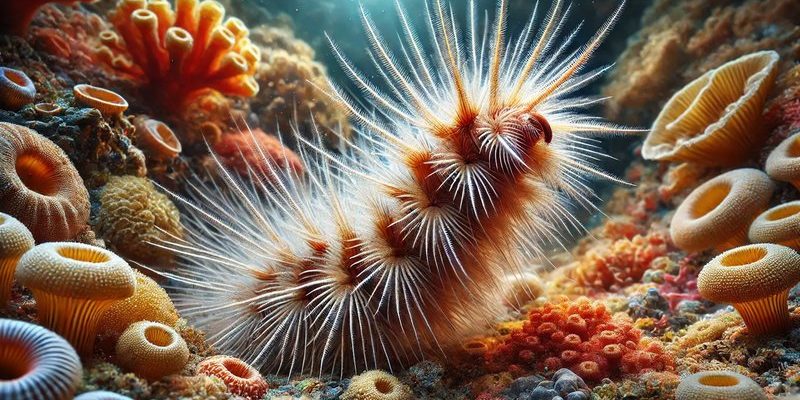
To put it simply, the bristle worm reproductive cycle is a unique process that showcases the incredible strategies these animals use to thrive in their environments. It’s like watching a well-choreographed dance unfold under the sea, where each step is crucial for ensuring the survival of their species. From mating rituals to the development of larvae, let’s dive into the unique world of bristle worm reproduction and discover just how they continue to flourish in the watery depths.
What Are Bristle Worms?
Bristle worms belong to the class Polychaeta, a group of segmented worms that are primarily found in marine environments. There are over 10,000 species of bristle worms, and they can be found in various habitats—from coral reefs to deep-sea trenches.
These creatures are known for their distinctive bristles, or chaetae, which stick out from their bodies and help them move through the water and sediment. Imagine bristle worms as the sea’s multitaskers; they’re not just good at swimming but also at burrowing into the ocean floor to create homes or find food. Their resilience is remarkable, as many species can adapt to different conditions, making them one of the ocean’s successful inhabitants.
What’s particularly interesting about these worms is their role in the ecosystem. They help break down organic material, recycling nutrients back into the water, which is crucial for the health of marine habitats. With their colorful appearance and important ecological functions, bristle worms are a true testament to the wonders of marine life.
The Basics of Bristle Worm Reproduction
The reproductive cycle of bristle worms can vary significantly depending on the species, but many follow a similar general pattern. Most bristle worms are either **hermaphroditic**, meaning they have both male and female reproductive organs or they can be dioecious, with separate sexes. This diversity gives them some flexibility in finding mates—necessary in the vast, sometimes sparse ocean.
Let’s break down the reproductive process a bit more. In many species, mating occurs through a process called **spawning**, where individuals release eggs and sperm into the water simultaneously. This usually happens during specific times of the year when conditions are just right, such as during certain moon phases or temperature ranges. The synchronized release increases the chances of fertilization, as the water is filled with reproductive cells.
Once the eggs are fertilized, they develop into larvae, which then go through several stages of growth. This entire process can take anywhere from a few days to several weeks, depending on the species and environmental conditions. Just think about it: From tiny fertilized eggs drifting in the ocean to fully formed worms wriggling their way into the sediment, the cycle is a remarkable journey.
Spawning Behavior of Bristle Worms
Bristle worms have some pretty unique spawning behaviors that set them apart from other marine animals. During the reproductive season, you might notice a flurry of activity—many species will gather in large groups to engage in a spectacular reproductive display. This coordination is likely an evolutionary tactic to ensure successful spawning, as mingling with many others increases the chances of successful fertilization.
One common phenomenon among certain bristle worms is **epitoky**, which is when a segment of the worm’s body transforms into a reproductive structure. This transformation allows them to swim up to the surface, where the water is rich with potential mates. You can picture it like a grand parade, where the epitokous worms, with their bright colors and zeal, float around, attracting attention for mating.
This behavior is not just fascinating to observe but also highlights the adaptability of bristle worms. By timing their spawning activities with environmental cues, they maximize their reproductive success, ensuring the next generation has a fighting chance.
The Life Cycle of Bristle Worms
Once the eggs are fertilized, they embark on a journey through the ocean as larvae. The early life of a bristle worm is quite different from its adult form. The larvae start as **trochophore**, which are free-swimming and can drift with the ocean currents. This stage can last several weeks, during which they feed on microscopic organisms and grow stronger.
As the larvae develop, they eventually undergo a transformation into **metatrochophore** larvae, which is more advanced. At this point, they start to take on characteristics of the adult worm, such as developing those bristles we recognize. Once they are ready, these larvae settle down onto the seafloor, where they undergo further growth and eventually morph into adult bristle worms.
The transition from larva to adult is a critical stage in their life cycle. It’s like moving from the chaos of young adulthood into the stability of a long-term career. Once they settle, they start burrowing into the sediment or establishing their spots on coral reefs, which will provide them the resources they need to thrive.
Challenges in Bristle Worm Reproduction
Like many species, bristle worms face various challenges in their reproductive cycle. Environmental factors such as **pollution**, **climate change**, and **habitat loss** can hinder their ability to reproduce successfully. For instance, as ocean temperatures rise and waters become more acidic, it can disrupt the sensitive spawning timings of these creatures.
Another challenge is the threat from predators. While the bristle worm’s bristles act as a deterrent to some, many fish and invertebrates still see them as a delicacy. With decreasing populations due to overfishing and habitat destruction, bristle worms may struggle to find mates and successfully reproduce.
In some cases, human activity can also directly affect their spawning grounds. If their habitats are disturbed, it can lead to reduced breeding success. This reality highlights the importance of conservation efforts aimed at preserving marine ecosystems. After all, the health of bristle worms and their ability to reproduce plays a crucial role in the overall health of marine environments.
Why Understanding the Reproductive Cycle Matters
So, why should you care about the bristle worm reproductive cycle? Well, understanding this cycle can shed light on broader ecological dynamics, including how marine species interact and support each other. Bristle worms, like other organisms, are integral to the health of ocean ecosystems.
Their reproductive strategies and the success of their life cycles can directly influence the food chain in their habitats. Healthy bristle worm populations mean more nutrients and healthier seafloor ecosystems. They essentially serve as indicators of ocean health, so studying their reproductive habits can offer insight into the state of marine environments.
Plus, as climate change and human activity continue to impact our oceans, knowing how these creatures reproduce and thrive can help in conservation efforts. It encourages a sense of responsibility to protect marine ecosystems, and that goes a long way in preserving our blue planet.
Exploring the bristle worm reproductive cycle offers a glimpse into the wonders of marine life. From their unique spawning behaviors to the challenges they face, these creatures embody the complexity of ocean ecosystems. By understanding how they reproduce, we not only appreciate their role in nature but also the delicate balance that sustains life beneath the waves.
Next time you think about the bristle worm, picture that vibrant underwater dance of life—a cycle that’s not just about survival but also about thriving against all odds. By sharing knowledge about these remarkable beings, we can foster a deeper appreciation for the oceans and take steps to protect them for generations to come.

